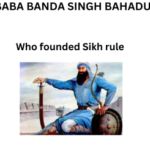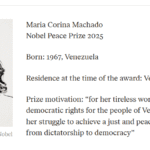Weekly Iron And Folic Acid Supplementation (Wifs) Programme: Basics Explained

The Union Minister of State for Health and Family Welfare, Dr Bharati Pravin Pawar stated in a written reply in the Rajya Sabha that the Government of India has been working for ensuring women’s and child health. Progress made in the various interventions under Rashtriya Kishor Swasthya Karyakram is as below:
A total of 7203 Adolescent Friendly Health Clinics (AFHCs) have been established in the country; 52 lakh Adolescent clients received counselling and clinical services in AFHCs during 2021-22.
4.14 crore Adolescents were provided Weekly Iron Folic Acid Supplementation tablets under the Weekly Iron and Folic Acid Supplementation (WIFS) Programme in 2021-22
The Scheme for Promotion of Menstrual Hygiene is implemented to promote menstrual hygiene among adolescent girls in the age group of 10-19 years. 34.92 lakh adolescent girls have been covered every month under this scheme in FY 2021-22 both through the Centre and State budgets.
LEARNING FROM HOME/WITHOUT CLASSES/BASICS
The Government is also implementing the Scheme for Promotion of Menstrual Hygiene for girls. Further, the Weekly Iron Folic Acid Supplementation (WIFS) Programme also covers the Out of school girls through the platform of Anganwadi Centres.
The Ministry of Health and Family Welfare has launched the Weekly Iron and Folic Acid Supplementation (WIFS) Programme to meet the challenge of high prevalence and incidence of anaemia amongst adolescent girls and boys. WIFS is an evidence-based programmatic response to the prevailing anaemia situation amongst adolescent girls and boys through supervised weekly ingestion of IFA supplementation and biannual helminthic control.
The long-term goal is to break the intergenerational cycle of anaemia, the short-term benefit is of nutritionally improved human capital. The programme is implemented across the country both in rural and urban areas.
Salient features of WIFS:
i. Objective of Weekly Iron Folic acid Supplementation (WIFS) To reduce the prevalence and severity of anaemia in an adolescent population (10-19 years).
ii. Target groups
School-going adolescent girls and boys in 6th to 12th class enrolled in government/government aided/municipal schools.
Out-of-school adolescent girls.
iii. Intervention
Administration of supervised Weekly Iron-folic Acid Supplements of 100mg elemental iron and 500ug Folic acid using a fixed-day approach.
Screening of target groups for moderate/severe anaemia and referring these cases to an appropriate health facility.
Biannual de-worming (Albendazole 400mg), six months apart, for control of the helminthic infestation.
Information and counselling for improving dietary intake and for taking actions for prevention of intestinal worm infestation.
According to the World Health Organization (WHO), the prevalence of anaemia among women of reproductive age (aged 15−49 years) is calculated as the percentage of women in the said age group with a haemoglobin concentration of less than 120 grams per Litre (g/L) or 12 grams per decilitre (g/dL) for non-pregnant and lactating women, and less than 110 g/L or 11 g/dL for pregnant women, adjusted for altitude and smoking.
Similarly, the prevalence among children (aged 6 – 59 months) is calculated as a percentage of children in the said age group with a haemoglobin concentration less than 110 g/L or 11 g/dL, adjusted for altitude. Prevalence of 40% and above is considered severe.
The Union Health Ministry recently released the key findings of both phases of the National Family Health Survey that was conducted between 2019 & 2021. This is the fifth edition of the NFHS.
The increase in anaemia among pregnant women is by 1.8 percentage points, among all women of the reproductive age is 3.9 percentage points, and among adolescent women by 5 percentage points. Among children, the increase is the highest at 8.5 percentage points.
Among children aged 6 to 59 months, anaemia is the most prevalent in Gujarat among the larger states with nearly 80% of the children in the age group diagnosed with anaemia. Madhya Pradesh, Rajasthan, Punjab, Haryana, and Telangana are the major large states with a prevalence of more than 70% among children. Kerala is the only state to have recorded a prevalence of less than 40% (39.4%),
West Bengal and Gujarat had the highest prevalence of anaemia among adolescent girls.Almost 97% of the adolescent women in Ladakh in the 15 to 19 age group were found to be anaemic. Among large states, the prevalence was the highest in West Bengal, followed by Gujarat with 69%.
More than 60% of pregnant women were anaemic in Bihar, Gujarat, West Bengal, Odisha, and Tripura.
The prevalence of anaemia among all women in reproductive age (15 to 49 years) reveals that West Bengal had the highest prevalence of 71.4%. Assam, Jharkhand, and Gujarat have a prevalence of 65% and above.




0 Comments